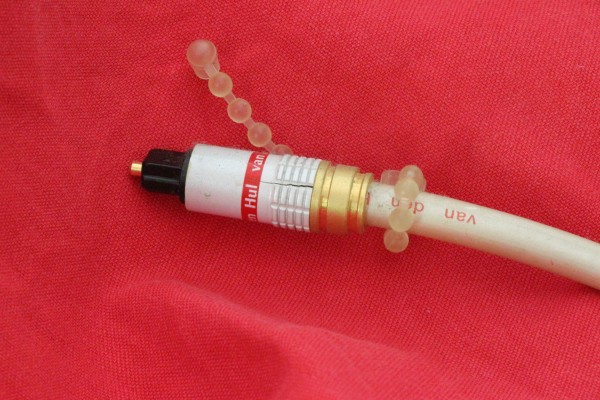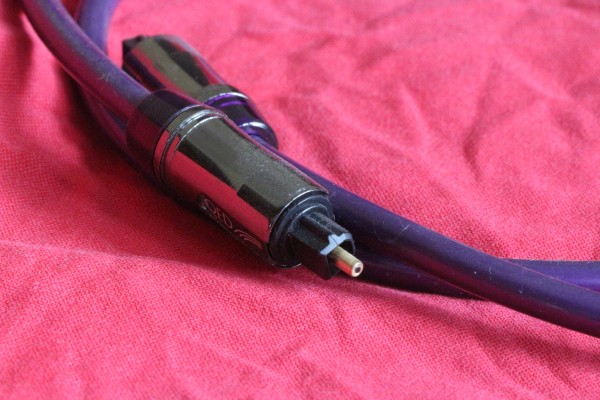
By Lam Seng Fatt
I have to admit that I was once a sceptic, but now with the help of the very revealing Lamm LL2 Deluxe preamp I am a believer.
Can the material used in a fibre optic cable that transmits light affect sound quality? Previously I would have said “No”; now I will say the opposite.
I recall comparing a QED Performance medical-grade plastic Toslink cable with an MIT Terminator 3 coax while I was using the Benchmark DAC1 Pre as the preamp and found little difference between the two. So I thought then that plastic fibre optics had improved so much that it did not matter if glass or plastic was used to transmit the light signal.
Then things changed – I picked up the Lamm LL2 Deluxe preamp and one day I spotted a van den Hul Optocoupler listed on hifi4sale. I had always wanted to check out a glass Toslink and I knew for sure that the VDH Optocoupler (1st version) was made of glass. So I telephoned the seller and asked if there was a “II” marking on the jacket. He said there was no such marking and he was quite sure it was a Mk 1.
There is nothing in van den Hul”s website to confirm that the Optocoupler II uses glass, so if the seller was certain it was an Optocoupler I, I was all prepared to buy it. The seller and I met in Taipan, Subang Jaya, and after a quick exchange of cash for goods, I sped home to test it.
Using the resident Roksan Caspian M1 CD player as transport and the Wyred4Sound DAC2, I played one song with the plastic Toslink and switched to the glass model.

Others have noticed this before – just google “glass vs plastic Toslink”. The glass Toslink sounded cleaner and clearer while the plastic sounded warmer, less detailed and not as clear with “fattish” images.
If I were to use metal to describe the sound quality, I would say that plastic Toslink sounds like a copper cable while glass Toslink sounds like a silver cable. After a while, I decided that I preferred the sound of glass Toslink in my system.
The clear and clean sound with more bite to leading edges appealed more to me than a warmish, “fattish” sound.

hi ray,
the first version of the van den hul toslink cable is made of glass. as for the Mk 11, i do not know.
i have the first version of the vdh toslink, but i have not tested it against the lifatec or the wireworld.
tq
sflam
Dear Sir,
I also have the same question whether VDH optical cable is made of glass fiber because it is not clearly mentioned on their own manual.
I also want to know the quality difference between Van Den Hul, Lifatec’s Sifflex and Wireworld for optical toslink cable.
Looking forward for a favorable reply,
Best regard,
Ray
hi adrian,
thanks for your comment. i have read that the lifatec silflex toslink is good. i have also read that the best is the wireworld supernova now in version 7. if i can get hold of the wireworld, i shall test it against the vdh optocoupler.
tq
sflam
Hi Lam,
I wish I live in KL, so I can lent you the lifatec’s Silflex Toslink, which is glass fiber optic. Would be interesting to find out whether there is anymore differences between them.
I once read, the termination end, how the point is being polished also make a different in the optic quality.
Your findings of glass vs plastic are similar like what I did last time. Glass is superior over the plastic(TCI Coral).